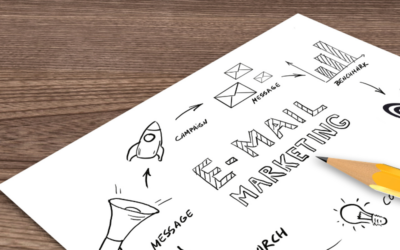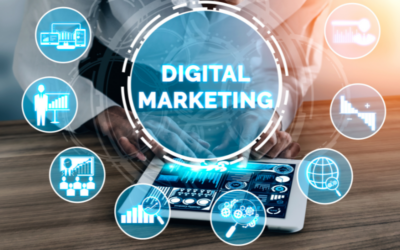Discover the top strategies for designing high-converting emails and boosting your email marketing success.
Understanding the Importance of Email Design
Email design plays a crucial role in the success of your email marketing campaigns. It is the first thing your subscribers see when they open your email, and it sets the tone for their entire experience. A well-designed email not only grabs attention but also builds trust and credibility with your audience.
When your email design is visually appealing and professional, it reflects positively on your brand. It shows that you value your subscribers’ time and are committed to delivering a high-quality experience. On the other hand, a poorly designed email can make your brand appear unprofessional and may even lead to your subscribers losing interest or unsubscribing.
In addition to aesthetics, email design also impacts the deliverability and engagement of your emails. Email service providers consider factors like responsive design, image optimization, and clean HTML coding when determining whether to deliver your emails to the inbox or the spam folder. Moreover, a well-designed email with clear call-to-action buttons and an easy-to-read layout can encourage recipients to take the desired actions, such as making a purchase or signing up for an event.
Therefore, it is crucial to invest time and effort into understanding the importance of email design and implementing effective design strategies to maximize the conversion rate of your email campaigns.
Crafting Attention-Grabbing Subject Lines
The subject line is the first impression your email makes on your subscribers. It is the deciding factor whether they open your email or send it straight to the trash folder. Crafting attention-grabbing subject lines is essential to increase the open rate of your emails and capture your audience’s interest.
To create compelling subject lines, it is important to understand your target audience and their pain points. Use language that resonates with them and addresses their needs or desires. Personalization can also be effective in grabbing attention, such as including the recipient’s name or mentioning a previous interaction.
Another strategy is to create a sense of urgency or exclusivity in your subject lines. Words like ‘limited time offer,’ ‘exclusive access,’ or ‘don’t miss out’ can create a fear of missing out and encourage subscribers to open your email to learn more.
Additionally, testing different subject lines and analyzing the results can help you understand what works best for your audience. By monitoring open rates and click-through rates, you can refine your subject line strategies and continuously improve the performance of your email campaigns.
Optimizing Email Layout and Formatting
The layout and formatting of your emails play a crucial role in delivering a seamless and enjoyable reading experience for your subscribers. A well-optimized email layout ensures that your content is easy to read and navigate, increasing engagement and conversion rates.
One important aspect of email layout is responsiveness. With the increasing use of mobile devices, it is essential to design emails that are mobile-friendly and adjust to different screen sizes. Responsive design ensures that your emails look great on any device, improving the user experience and maximizing the chances of conversion.
Another aspect to consider is the use of white space. A cluttered email with too much text or too many images can overwhelm your subscribers and make it difficult for them to focus on the main message. By strategically using white space, you can create a clean and organized email layout that guides the reader’s attention and enhances readability.
Furthermore, using headings, subheadings, and bullet points can break up the content and make it easier to scan. This allows subscribers to quickly grasp the main points of your email and encourages them to take action.
Lastly, don’t forget to optimize your email for fast loading times. Large file sizes or excessive use of images can slow down the loading speed, leading to frustration and potential abandonment. Compressing images and optimizing code can help improve the loading speed and ensure a smooth experience for your subscribers.
Using Visual Elements to Enhance Engagement
Visual elements can significantly enhance the engagement and impact of your emails. Including relevant and eye-catching visuals can capture your subscribers’ attention and convey your message more effectively.
One effective visual element is the use of high-quality images. Images can be used to showcase products, illustrate concepts, or evoke emotions. However, it is important to ensure that the images are relevant to the content and align with your brand identity. Additionally, optimizing images for faster loading times is crucial to prevent delays and maintain a smooth user experience.
Another visual element to consider is the use of videos or animated GIFs. Videos can provide a more interactive experience and effectively demonstrate products or services. Animated GIFs can add an element of fun and visual interest to your emails, making them more memorable and shareable.
Incorporating branding elements, such as your logo or brand colors, can help strengthen brand recognition and reinforce your brand identity. Consistency in visual elements across your emails and other marketing channels can contribute to a cohesive and professional brand image.
However, it’s important to strike a balance with visual elements. Too many visuals can overwhelm the email and distract from the main message. Make sure the visuals enhance the content rather than overshadow it.
Implementing Effective Call-to-Actions
Call-to-actions (CTAs) are crucial elements in high-converting emails. They guide your subscribers towards the desired action, whether it’s making a purchase, signing up for a webinar, or downloading an ebook. Implementing effective CTAs can significantly increase the conversion rate of your emails.
When designing CTAs, it is important to make them visually prominent and easily clickable. Use contrasting colors, bold fonts, or buttons to make the CTAs stand out from the rest of the email content. Additionally, ensure that the CTAs are placed strategically and are easily accessible on both desktop and mobile devices.
The language used in CTAs is also important. Instead of generic phrases like ‘click here’ or ‘learn more,’ use action-oriented and benefit-driven language that motivates your subscribers to take action. For example, ‘Get your free trial now’ or ‘Start saving today.’ By clearly communicating the value and benefits of taking action, you can encourage more conversions.
Testing different CTAs and analyzing the results can help you understand what resonates with your audience and drives the most conversions. A/B testing different button colors, sizes, or text can provide valuable insights and allow you to optimize your CTAs for maximum effectiveness.



